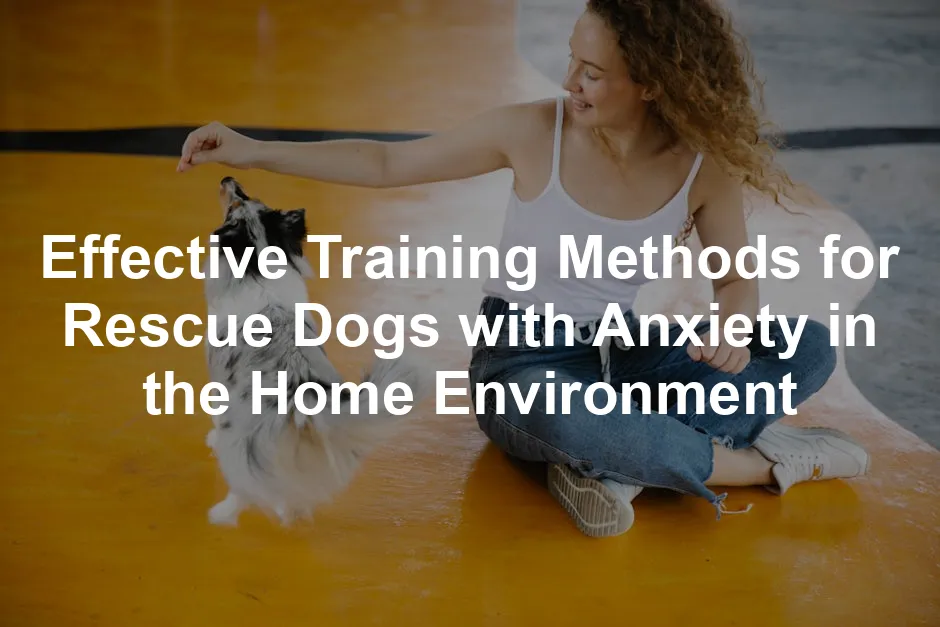Introduction
Adopting a rescue dog can feel a bit like adopting a tiny, furry tornado—full of chaos and unpredictability! But with the right training methods, you can help your new friend settle into your home like a snug little burrito. Rescue dogs often come with a backpack full of emotional baggage. Past traumas, neglect, or even a simple shelter environment can leave them anxious, skittish, or unsure of their new surroundings.
Understanding and addressing anxiety in rescue dogs is crucial for creating a safe and loving environment. Imagine bringing home a pup who’s convinced that every noise is the end of the world. The good news? With a little patience and effective training, you can help your anxious dog feel secure and confident in their new home.
When you adopt a rescue dog, it’s essential to recognize their unique challenges. Every bark, every flinch, and every nervous glance at the door tells a story. You’re not just a pet parent; you’re a guardian of a fragile heart that needs nurturing. And just like a flower needs sunlight, your rescue dog needs understanding to bloom.
Training is not merely about teaching commands; it’s about establishing trust, building confidence, and creating a bond that can withstand any storm. By employing effective training methods tailored to your dog’s needs, you can help them navigate their anxiety and transform into the happy, well-adjusted companion you envision. So, let’s roll up our sleeves and dive into some effective training methods that will turn your anxious rescue dog into a tail-wagging, confident superstar!
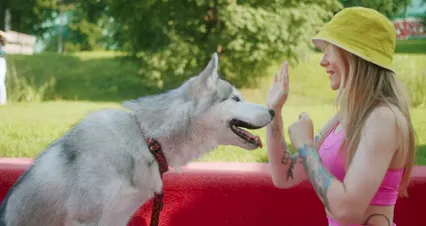
Summary
In this article, we’ll uncover key points about training rescue dogs with anxiety in a home environment. First, we’ll explore the importance of creating a calming home atmosphere. A serene space can work wonders for your pup’s anxiety. Next, we’ll discuss the art of establishing trust. Building a solid bond takes time but pays off in spades.
We’ll also delve into positive reinforcement techniques, which are not only effective but also fun. Who doesn’t love rewarding good behavior with treats and praise? You’ll learn how incorporating daily routines can provide structure and predictability in your dog’s life.
But wait, there’s more! We’ll share specific training methods to combat anxiety, along with heartwarming success stories that will inspire you. So stick around; your journey to understanding and training your rescue dog is just getting started!
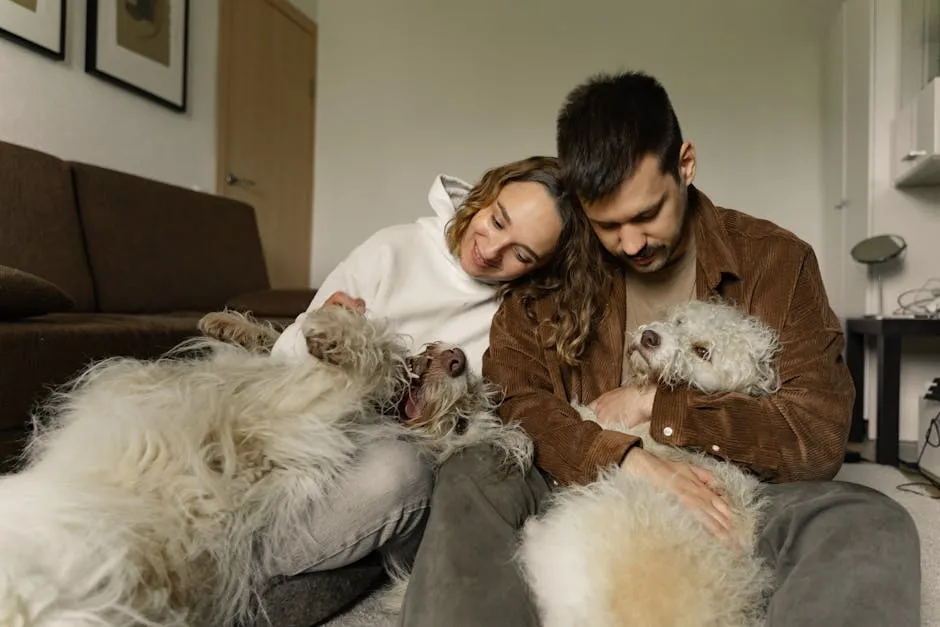
Understanding Anxiety in Rescue Dogs
Signs of Anxiety
Rescue dogs often communicate their feelings through behavior. Recognizing the signs of anxiety is essential for helping them feel secure. Here are some common indicators:
- Barking: Excessive barking may signal distress. For instance, a dog that barks when left alone could be expressing separation anxiety.
- Pacing: If your dog is constantly walking back and forth, it may be feeling restless. Picture a dog circling the living room like it’s preparing for a showdown with an invisible foe.
- Destructive Behavior: Chewing furniture or digging in the yard can be a cry for help. Imagine a pup transforming your favorite shoes into chew toys—it’s not personal; they’re just overwhelmed!
- Hiding: Dogs may seek refuge under furniture or in corners, trying to escape their anxiety. It’s as if they’re creating their own safe haven from the chaos around them.
- Excessive Licking or Grooming: This can be a coping mechanism. If your dog is obsessively grooming, it might be trying to soothe itself.
- Avoidance: If your dog avoids certain people, objects, or areas, it could be a sign of anxiety. For example, a dog that shies away from loud noises is likely feeling anxious about those sounds.
Identifying these behaviors is the first step towards understanding your rescue dog’s emotional state. The next step? Preparing your home to create a comforting environment where your furry friend can thrive.
Preparing Your Home for a Rescue Dog
Creating a Safe Space
Creating a designated area for your rescue dog is crucial. Think of it as their cozy retreat, a safe haven where they can recharge. This space should be inviting and comfortable, ensuring your dog feels secure whenever anxiety strikes.
Include cozy bedding, such as a soft blanket or a plush dog bed. You might add their favorite toys for comfort and to promote positive interactions. Consider incorporating calming scents like lavender through a diffuser or safe dog-friendly sprays. These elements can help soothe their nerves.
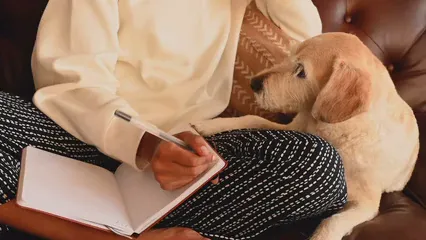
Reducing Overstimulation
Minimizing sensory overload is key for an anxious dog. Start by creating a quiet environment, especially during the initial adjustment period. Here are some tips:
- Calming Music: Play soft, calming music to drown out sudden noises. This can help mask sounds that may trigger anxiety. Consider a Calming Music for Dogs CD to help create a peaceful atmosphere.
- Cover Windows: Use curtains or blinds to block outside distractions. A quiet room can work wonders in helping your dog feel more secure.
- Limit Visitors: During the early days, keep the number of visitors low. Too many new faces might overwhelm your rescue dog.
- Establish a Routine: Dogs thrive on predictability. Set regular feeding, walking, and playtimes to help your dog understand what to expect.
Creating a tranquil home environment is vital for easing your rescue dog’s anxiety. With a safe space and reduced stimulation, your new family member will feel more secure as they adjust to their forever home.

Effective Training Methods
Positive Reinforcement Techniques
Positive reinforcement is a powerful tool in dog training. It involves rewarding desirable behavior, which encourages your dog to repeat those actions. This method creates a bond of trust and respect between you and your rescue dog.
Effective rewards can include treats, praise, or affection. For example, when your dog sits calmly during a stressful moment, offer a treat or a gentle pat. This reinforces the calm behavior, showing them that staying relaxed is a good thing. You can learn more about effective positive reinforcement techniques for stubborn dogs to further enhance your training.
Using positive reinforcement can greatly improve your dog’s training experience. Learn more about effective positive reinforcement techniques.
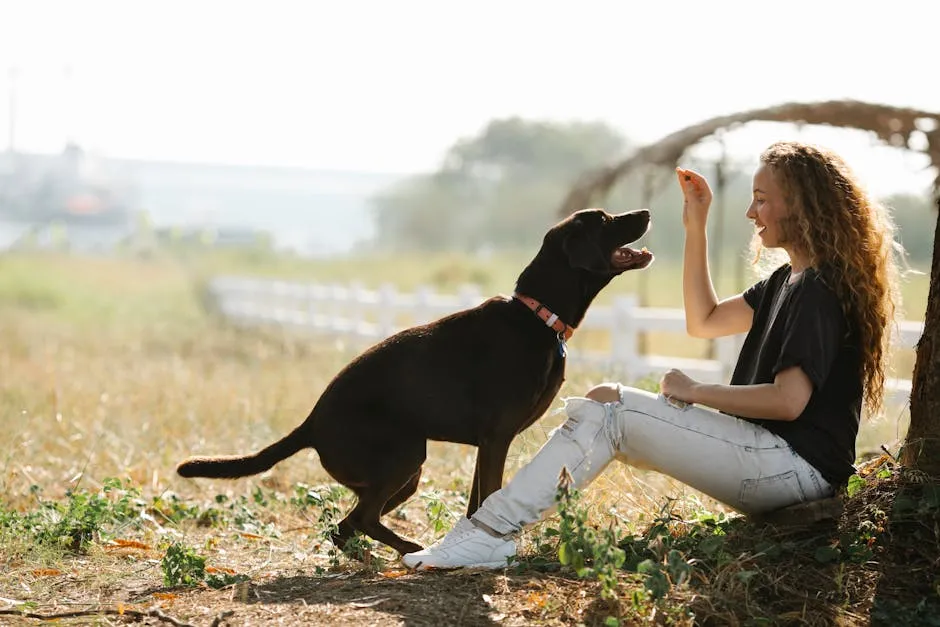
During training sessions, keep the atmosphere light and fun. Use high-value treats that your dog loves, making training feel like a treat itself! The goal is to turn every session into a positive experience. To keep those treats handy, consider a Dog Training Treat Jar to store your pup’s favorites!
Incorporate training into your daily routine. For instance, practice commands during walks or playtime. This not only makes training enjoyable but also helps your dog learn in different settings.
By consistently using positive reinforcement, you’ll help your rescue dog build confidence and learn to navigate their anxiety. With time, patience, and love, your anxious pup can transform into a well-adjusted companion.
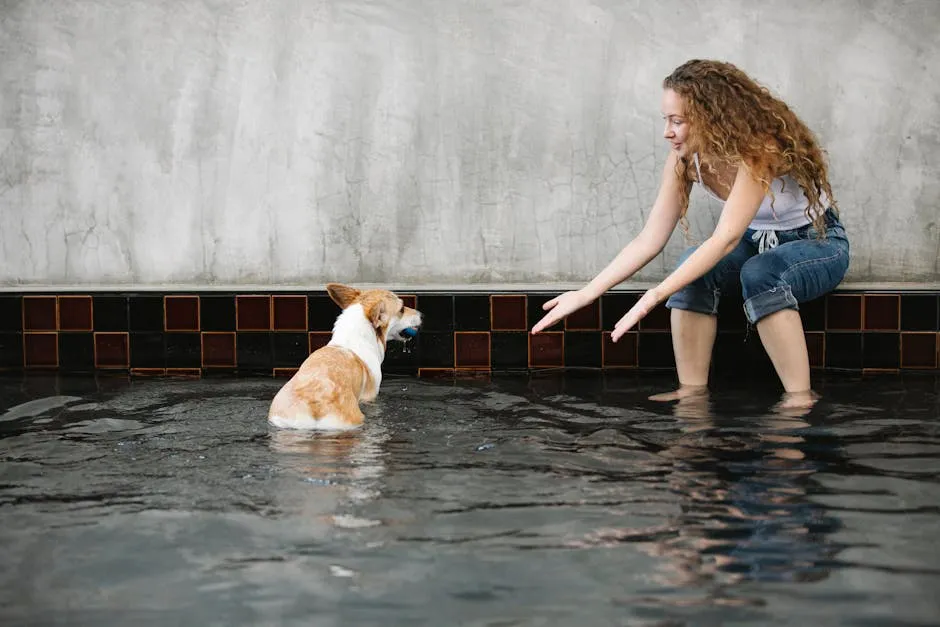
Enrichment Activities
Mental stimulation is a game changer for dogs, especially rescue pups battling anxiety. Think of it as brain food! Engaging activities can transform those jittery nerves into calm, confident vibes. Puzzle toys are fantastic for this. They challenge your dog to figure out how to retrieve treats, keeping their minds busy. Imagine your dog’s joy as they work to get that tasty morsel—it’s like a mini treasure hunt!
Scent work is another paw-some option. Dogs have an extraordinary sense of smell, and using that talent can be incredibly rewarding. Hide treats around the house and let your dog sniff them out. Not only does this engage their brain, but it also taps into their natural instincts. Plus, it’s a great way to bond with your furry friend while giving them a sense of purpose.
Foraging games also work wonders! Scatter some kibble or treats in a safe space and let your dog dig in—literally! This mimics natural behaviors and keeps them occupied. It’s like a buffet where they’re the chefs!
Success stories abound! Take Bella, a rescue who was once terrified of everything. After integrating puzzle toys and scent games into her routine, she blossomed. Bella now struts confidently around the house, tail wagging like she’s won the lottery. These activities can be a game changer, making a real difference in the lives of anxious dogs. You can find more ideas for low-cost DIY dog enrichment activities to keep your pup happy and engaged.
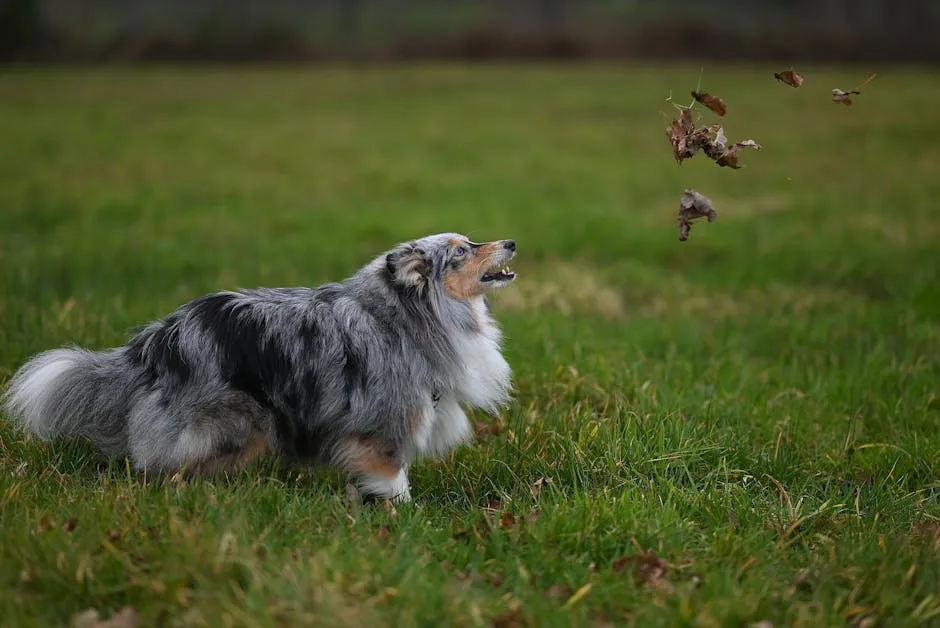
Engaging your dog in mental activities can significantly reduce anxiety. Explore low-cost DIY dog enrichment activities for more ideas.
Establishing Routines
Routines are the secret sauce for anxious dogs. They provide a comforting structure that eases anxiety and builds confidence. Imagine your pup waking up each day knowing exactly what to expect—it’s like a daily spa day for their mind!
A sample daily schedule can include:
- 7:00 AM: Breakfast time—start the day with a nutritious meal.
- 8:00 AM: Morning walk—get those legs moving and explore the neighborhood.
- 10:00 AM: Playtime—engage with toys or have a training session.
- 12:00 PM: Relaxation period—time for a cozy nap in their safe space.
- 2:00 PM: Enrichment activity—interactive treat dispensers or scent work to stimulate their mind.
- 4:00 PM: Afternoon walk—another chance to stretch their legs and enjoy the outdoors.
- 6:00 PM: Dinner time—refuel with another delicious meal.
- 8:00 PM: Wind down with cuddles or gentle grooming before bed.
This routine not only helps your dog feel secure but also gives them something to look forward to. With a predictable schedule, your rescue dog can focus less on anxiety and more on enjoying life with you!
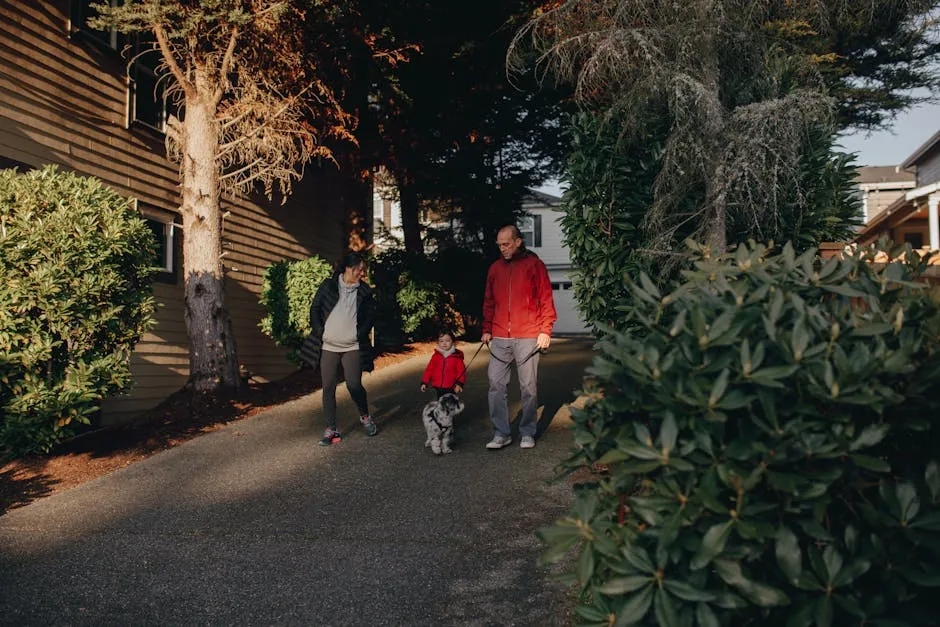
Gradual Exposure Techniques
Gradual exposure techniques are vital for helping anxious dogs cope with their fears. This process focuses on desensitization and counter-conditioning—sounds fancy, right? But it’s really about baby steps!
Start by identifying your dog’s triggers. Is it loud noises, other animals, or new people? Once you know what causes anxiety, you can begin introducing those triggers in a controlled way.
For example, if your dog is scared of loud noises, start by playing recordings of those sounds at a low volume. Pair this with a treat or a favorite toy. The goal is to create positive associations with the scary noise. Gradually increase the volume over time while continuing to reward calm behavior.
If you’re introducing your dog to new people, have the person sit quietly without approaching. Reward your dog for calm behavior. Once they seem comfortable, the person can slowly join in on the fun.
Remember, patience is key! Each dog moves at their own pace, and it’s essential to go slow. Celebrate every little victory—whether it’s your dog staying calm during a thunderstorm or greeting a new person without barking. These gradual steps build resilience and confidence, helping your anxious pup thrive in their forever home.

Socialization
Socialization is a game changer for rescue dogs battling anxiety. Think of it as building a confidence skyscraper, one friendly interaction at a time! When you expose your dog to various people, environments, and other dogs, you help them learn that the world can be a safe and fun place. This process reduces fear and builds trust, easing their anxious little hearts.
To start socializing your rescue dog, choose calm environments. A quiet park is ideal for avoiding overwhelming stimuli. Gradually introduce your pup to new sights, sounds, and smells. Use treats and praise liberally! Reward calm behavior during these new experiences—after all, who doesn’t love a good snack?
Here are some tips to socialize your anxious rescue dog effectively:
- Go Slow: Don’t rush the process. Start with one new experience at a time, whether it’s meeting a new person or encountering another dog. This makes the experience less daunting.
- Positive Associations: Whenever your dog meets someone new, make it a party! Treats, praise, and affection will help them associate new experiences with positivity. You want them thinking, “Meeting new friends? Yes, please!”
- Controlled Introductions: When introducing your dog to other dogs, ensure both pups are on leashes and in a neutral area. Watch their body language closely. If either dog shows signs of fear or aggression, it’s time to take a step back.
- Group Classes: Consider enrolling your dog in training or socialization classes. These controlled environments provide opportunities for your dog to interact with others while learning essential skills.
- Daily Outings: Incorporate short trips into your daily routine. Whether it’s a stroll around the block or a visit to a pet-friendly café, these outings gradually expose your dog to new experiences and help build their confidence. A Dog Travel Carrier can make these outings easier!
Socialization is not just about meeting new friends; it’s about fostering a sense of security. Each positive interaction is a brick in the foundation of your dog’s confidence. With time, your anxious rescue dog can feel less like a tumbleweed rolling in the wind and more like a proud lion strutting through their kingdom!
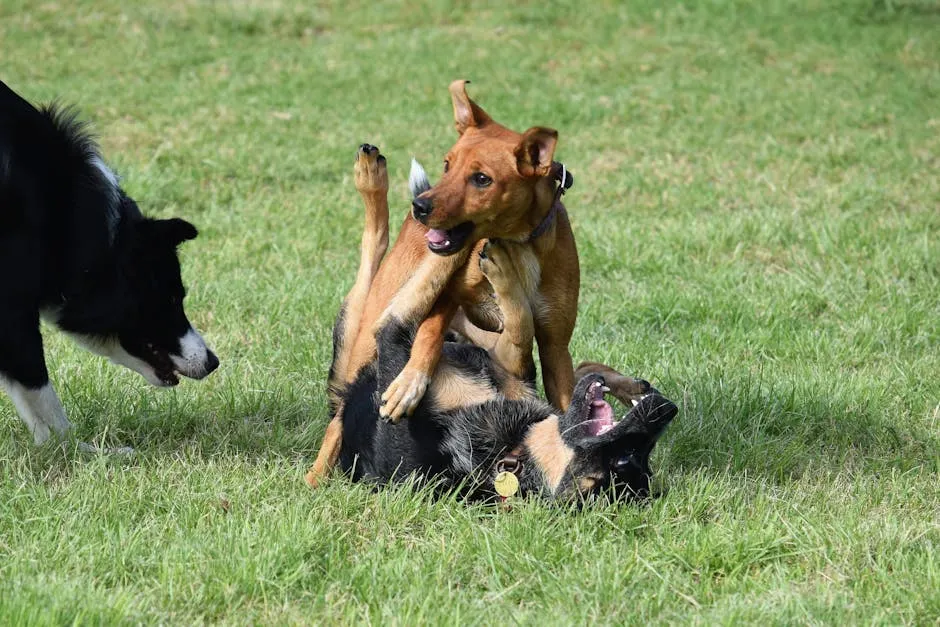
FAQs
What should I do if my rescue dog shows no interest in training?
If your pup seems indifferent, keep things light and fun! Try different rewards—some dogs prefer toys or affection over treats. Find what excites your dog and build training around that. Also, ensure the environment is calm. If they’re stressed, they won’t focus on training.
Can rescue dogs outgrow their anxiety?
Yes, many rescue dogs can learn to manage their anxiety over time. With consistent training and positive experiences, they can become more comfortable in their surroundings. It’s all about building trust and security through patience.
What are the best calming products for anxious dogs?
Several products can help soothe anxious pups. Consider calming collars infused with pheromones, anxiety wraps, or even soothing music designed for dogs. Natural supplements like those containing chamomile or valerian root can also promote relaxation. Always consult your vet before introducing new products. You might also want to check out Dog Anxiety Relief Calming Chews for additional support.
How long does it typically take to train a rescue dog?
Training a rescue dog isn’t a sprint; it’s more like a slow, scenic stroll through a park. Each dog is unique, with different backgrounds and experiences influencing their learning pace. On average, you might see basic commands taking anywhere from a few weeks to a few months to master. The key is consistency and patience.
When should I consider seeking professional help?
Sometimes, even the most dedicated pet parents need a helping paw. If you find yourself in a training quagmire, it might be time to call in the pros. Here are some signs that professional assistance could be beneficial for your rescue dog: Extreme Anxiety or Fear, Aggressive Behavior, Poor Progress, Feeling Overwhelmed, Specific Behavioral Challenges.
Please let us know what you think about our content by leaving a comment down below!
Thank you for reading till here 🙂
All images from Pexels

